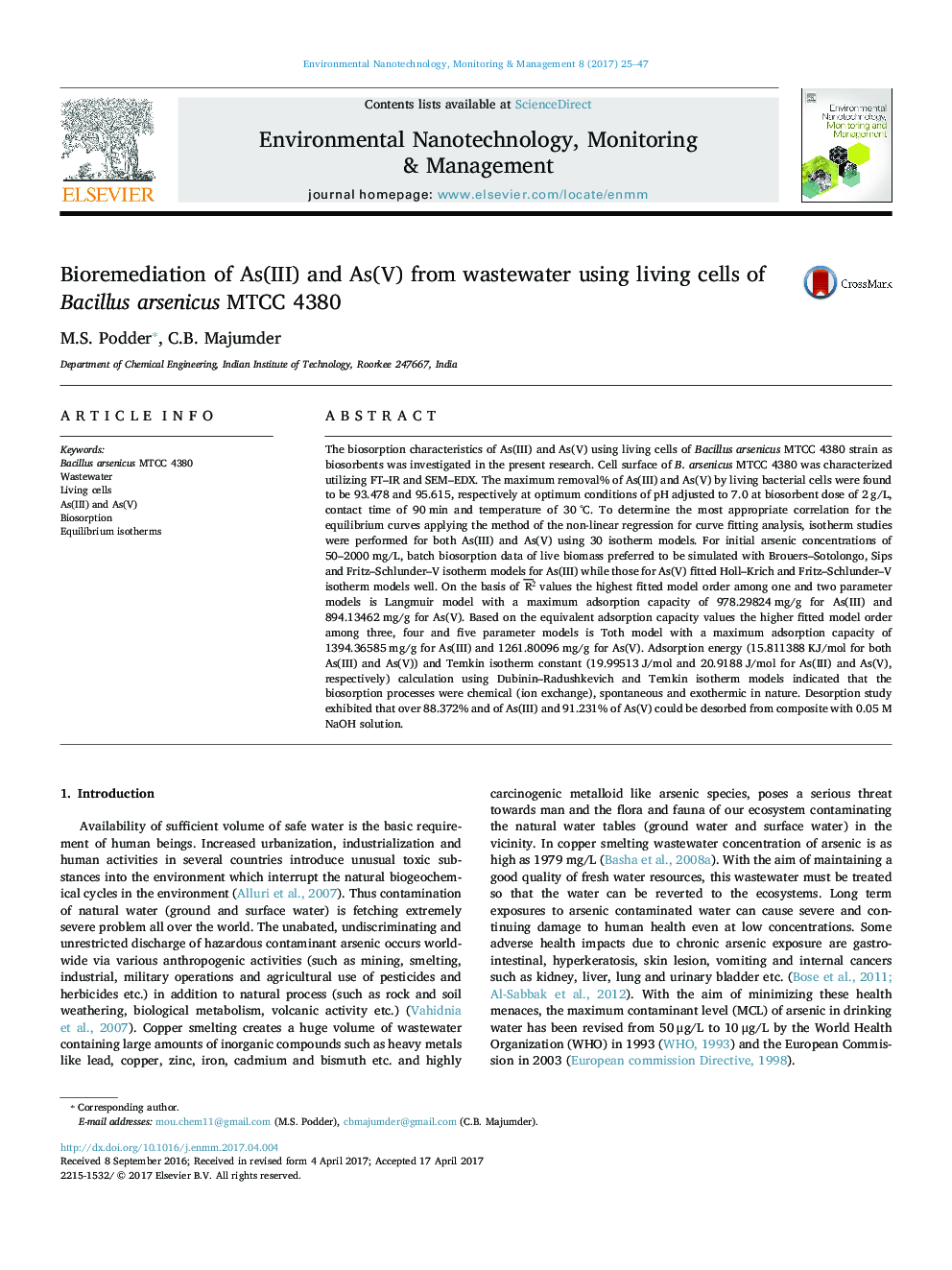| Article ID | Journal | Published Year | Pages | File Type |
|---|---|---|---|---|
| 5748483 | Environmental Nanotechnology, Monitoring & Management | 2017 | 23 Pages |
â¢Optimization of biosorption process parameters using Bacillus arsenicus MTCC 4380 was done.â¢Non-linear regression analysis was employed to identify the best-fit isotherm.â¢Different error functions were used to determine the best-fit isotherm.â¢Effects of co-existing ions on removal of arsenic (either As(III) or As(V)) were investigated.
The biosorption characteristics of As(III) and As(V) using living cells of Bacillus arsenicus MTCC 4380 strain as biosorbents was investigated in the present research. Cell surface of B. arsenicus MTCC 4380 was characterized utilizing FT-IR and SEM-EDX. The maximum removal% of As(III) and As(V) by living bacterial cells were found to be 93.478 and 95.615, respectively at optimum conditions of pH adjusted to 7.0 at biosorbent dose of 2 g/L, contact time of 90 min and temperature of 30 °C. To determine the most appropriate correlation for the equilibrium curves applying the method of the non-linear regression for curve fitting analysis, isotherm studies were performed for both As(III) and As(V) using 30 isotherm models. For initial arsenic concentrations of 50-2000 mg/L, batch biosorption data of live biomass preferred to be simulated with Brouers-Sotolongo, Sips and Fritz-Schlunder-V isotherm models for As(III) while those for As(V) fitted Holl-Krich and Fritz-Schlunder-V isotherm models well. On the basis of R2¯ values the highest fitted model order among one and two parameter models is Langmuir model with a maximum adsorption capacity of 978.29824 mg/g for As(III) and 894.13462 mg/g for As(V). Based on the equivalent adsorption capacity values the higher fitted model order among three, four and five parameter models is Toth model with a maximum adsorption capacity of 1394.36585 mg/g for As(III) and 1261.80096 mg/g for As(V). Adsorption energy (15.811388 KJ/mol for both As(III) and As(V)) and Temkin isotherm constant (19.99513 J/mol and 20.9188 J/mol for As(III) and As(V), respectively) calculation using Dubinin-Radushkevich and Temkin isotherm models indicated that the biosorption processes were chemical (ion exchange), spontaneous and exothermic in nature. Desorption study exhibited that over 88.372% and of As(III) and 91.231% of As(V) could be desorbed from composite with 0.05 M NaOH solution.
